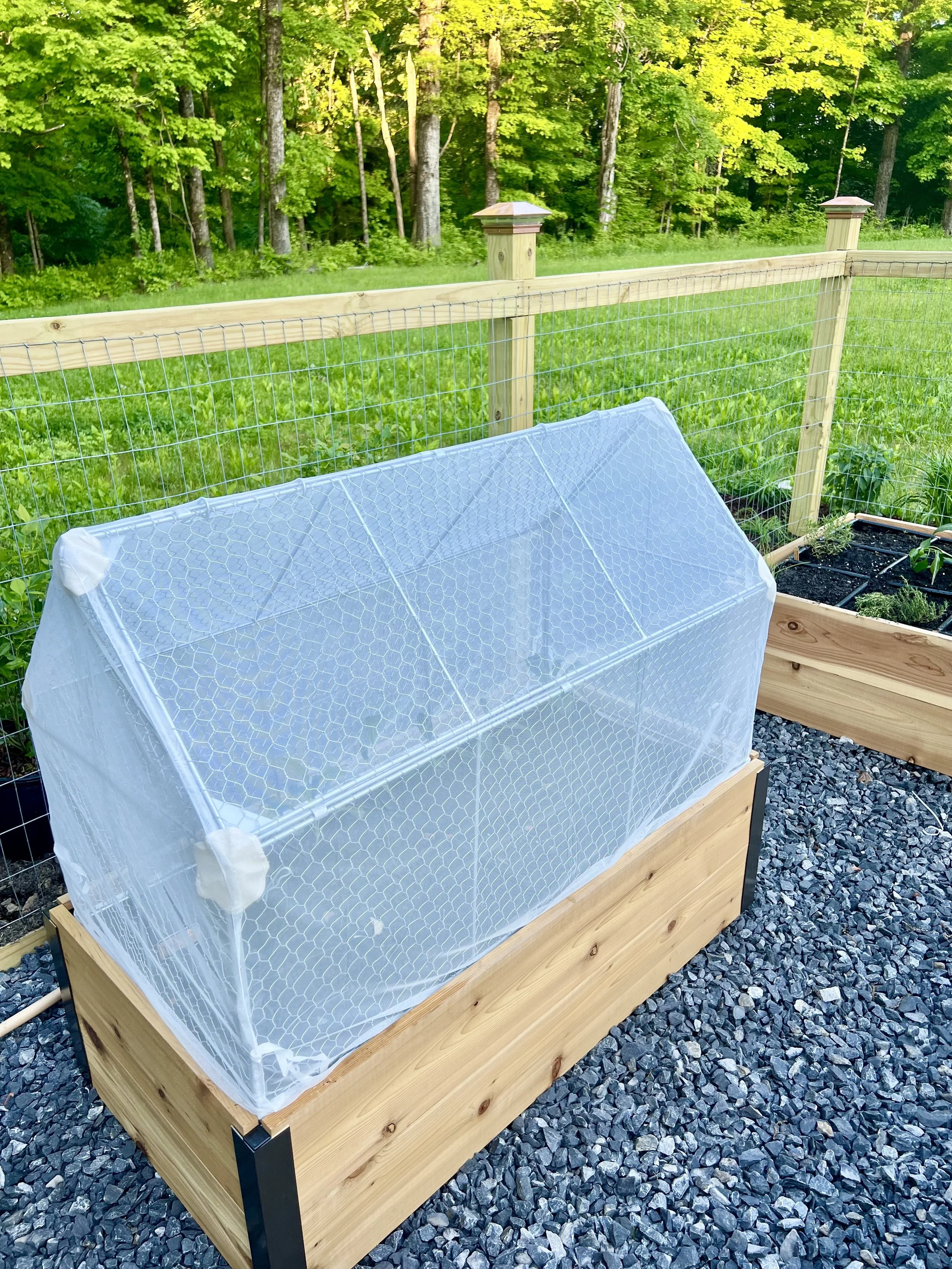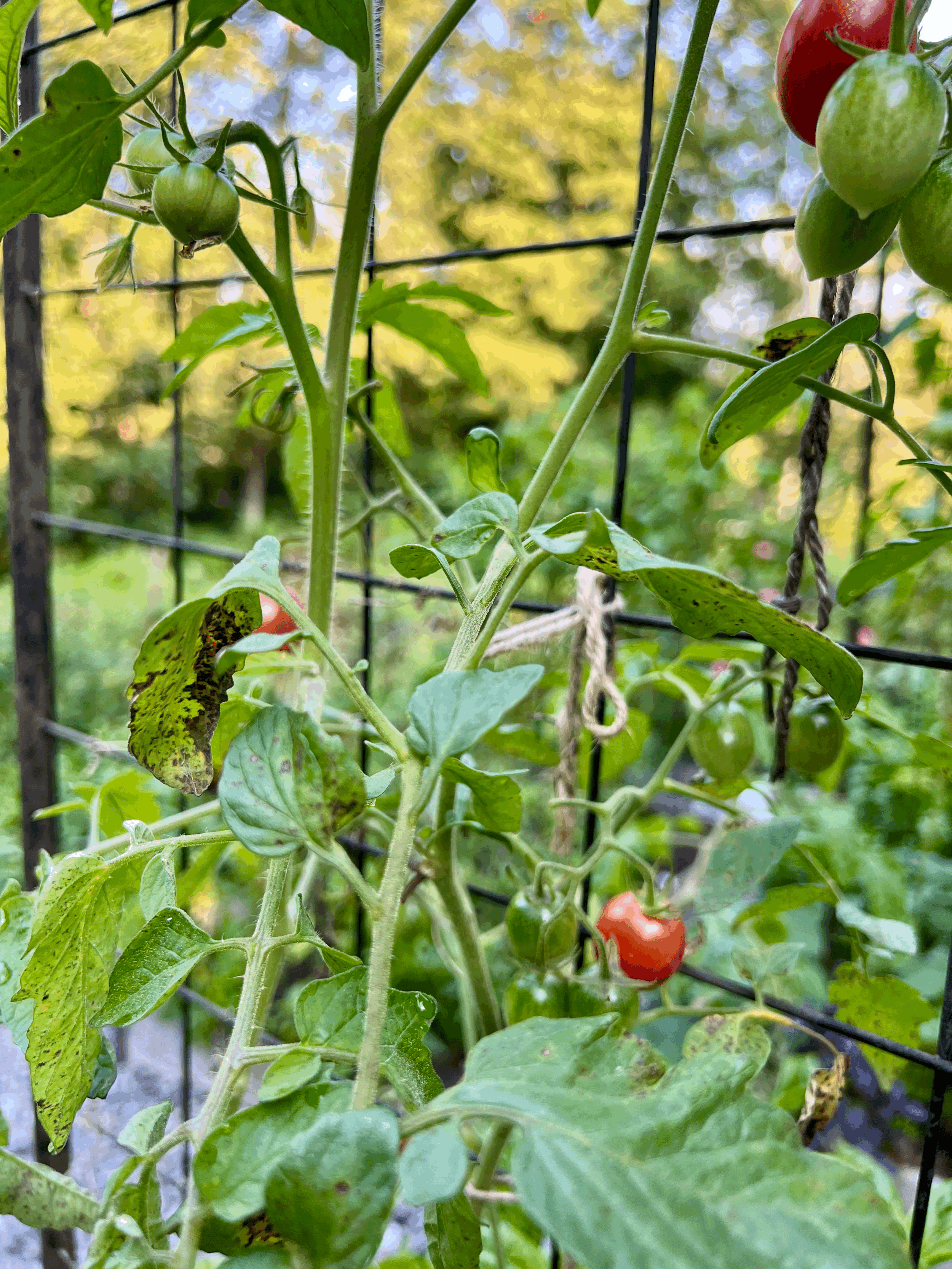Lessons from the Kale House
What I learned about cabbage worms, balance, and letting nature take the lead
Habitat Gardening: Inviting Predators, Not Pesticides
Five years ago, I put down the neem oil and the BT. I began planting strategically in and around the kitchen garden, creating an inviting habitat, with food and shelter, for beneficial insects, pollinators, and birds. I still occasionally hand pick pests when I’m sure they’re harmful and seem to be unchecked, although with each year that passes, I find fewer situations that warrant intervention. I don’t think people fully grasp how little I do to tend (and how little I worry!) now that the habitat has been established. I visit the space a few times a day when I can, sitting, watching, harvesting; I know my plants and garden players well.
Kale Fail
Cabbage worms, both the cabbage white butterflies and striped varieties, were the last holdouts. While a lovely balance was being achieved everywhere else in the garden, I was still losing kale overnight. I’d find it skeletal in a matter of days. I turned to a physical barrier, a frame covered in insect mesh. We did the same in a client’s kitchen garden, affectionately calling it the kale house. We both lost all our kale to those caterpillars. Every single plant was decimated.
Why Barriers Didn’t Work
So this year, I left it exposed. Within a week, a few spiders set up camp. Between them, the other beneficials already in the garden, and the birds, they’ve kept things under control. I’ve picked off a few worms and there are holes in some leaves, but nothing worth a second glance. Those cabbage moths were getting under the barrier somehow, but they were safe from the birds and beneficial insects that would have eaten them. Oops.
Choosing Resilience Over Control
Every year proves the same point: there’s more abundance here than there ever was when I tried to manage every detail. In a home kitchen garden, we can afford a few holes in the kale if it means the whole ecosystem thrives. Organic farming is different, and I don’t pretend to know the pressures they face or the best practices at that scale. They’re growing for markets and CSAs, where even cosmetic damage matters (though, as consumers, we have some control over that too).
Our gardens don’t have to play by those rules. We get to prioritize flavor over perfection, habitat over yield charts, and resilience over ecologically compromising practices.
Support beneficial insects in your garden
You do not need to redesign your entire garden to start building balance. A few well‑chosen plants and a shift in perspective can create habitat for pollinators, beneficial insects, soil life, and birds. Habitat means giving them what they need: shelter and food. Sometimes that food is nectar from flowers, and sometimes it is the pests themselves (aphids, for example, are a feast for lady beetles).
A big part of this shift is putting down any and all sprays or powders, even the ones labeled organic. These products disrupt the delicate ecosystem you are trying to build. They remove the very food source that beneficial insects rely on and can harm them at different stages of their life cycle, creating more imbalance over time.
I have shared more about recommended plants in this post on planting to attract beneficial insects. If you are looking for a practical way to match pests to their natural predators, my Kitchen Gardener’s Guide to Pests & Allies lets you search by crop or pest. It shows which beneficial insects help manage common problems and which plants will attract them to your vegetable garden, whether you are working with raised beds, containers, or a backyard plot. (Note: this tool is currently in beta. We welcome your feedback and invite you to share any pests you notice are missing.)
Have furry critters wreaking havoc in your garden?
Physical barriers, like wildlife-safe garden netting, are often the only answer. Although I made a game-changing discovery a few years ago: chipmunks and squirrels are usually just looking for water and don’t care much for vegetables. Once I started leaving small ramekins of water at the base of my tomato beds, they stopped eating the fruit.
Ok, I digress. Back to barriers. There are some important safety considerations for protecting vegetables and fruit without harming wildlife. I recently sat down with Homes & Gardens to talk about this in more detail. You can read the feature here: Gardeners urged to choose the right type of garden netting – to avoid harming local wildlife and damaging crops.
Did you know? Gardenwell offers custom design and planting plans, in addition to in-person and virtual coaching services. Submit a short inquiry here to chat!
Return to the Gardenwell Journal



